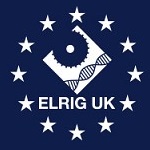

|
Poster
23 |
3D cell culture taking into account the extracellular matrix for bridging the gap between in vitro & in vivo: focus on cancer models |
In oncology, 97% of drug candidates fail in
clinical trials, pointing a lack of relevance of preclinical models. Indeed, human
in vitro models don’t take into
account the microenvironment, in particular the Extracellular Matrix (ECM), although it is modified in tumors and strongly
linked to cancer initiation, progression, propagation, and drug resistance.
BIOMIMESYS® is a hyaluronic acid-based matrix bio-functionalized with structural and
adhesion molecules of ECM, providing a relevant microenvironment for in vitro 3D cell culture. This ECM-like hydroscaffold
combines the advantages of solid scaffolds (porosity, structure) and hydrogels
(cell-matrix interactions). It is chemically defined and ready-to-used in
multi-well plates, thus it can be used for High Content Screening (HCS).
Moreover, its composition and stiffness can be modified to reproduce the
organ-specificity of the ECM, or to mimic a pathological microenvironment like
in cancer.